What does a blue pumpkin signify?
- Published

Halloween - time to get dressed up as something scary - and of course for children it's all about trick or treating.
But if someone came to your door with a blue pumpkin - would you know what it means?
Some parents want to spread awareness of autism by turning their pumpkins blue, or having blue plastic pumpkin containers.
The idea is it signifies a person trick-or-treating might have some specific needs.
Allow X content?
This article contains content provided by X. We ask for your permission before anything is loaded, as they may be using cookies and other technologies. You may want to read X’s cookie policy, external and privacy policy, external before accepting. To view this content choose ‘accept and continue’.

According to the NHS, external, people with autism can experience problems with social interaction and communication.
The blue pumpkins are well known in the USA but they are growing in popularity here too, with some high street stores selling them.
There are also teal pumpkins which indicate food allergies - so instead of sweets or food children are given glow sticks.
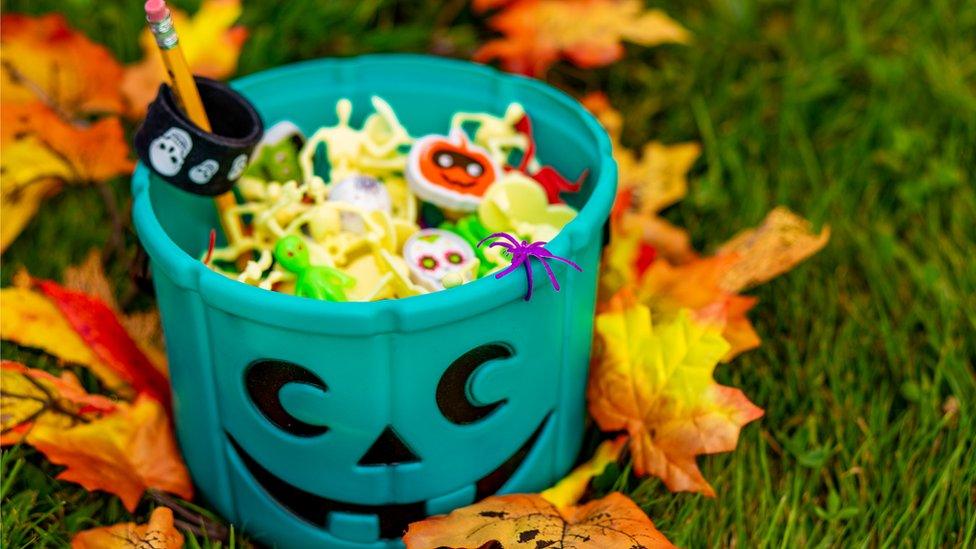
Teal pumpkin buckets symbolise someone has a food allergy
The National Autistic society says there are things everyone can do to be mindful some trick or treaters could be autistic.
Tom Purser, Head of Campaigns at the National Autistic Society, said, "Halloween is an exciting time of year for many autistic children and adults.
"But it can be really difficult for autistic people who struggle with unexpected changes or who have sensitivities to noise, touch and light."
Here are some of their suggestions:
Go out during the day
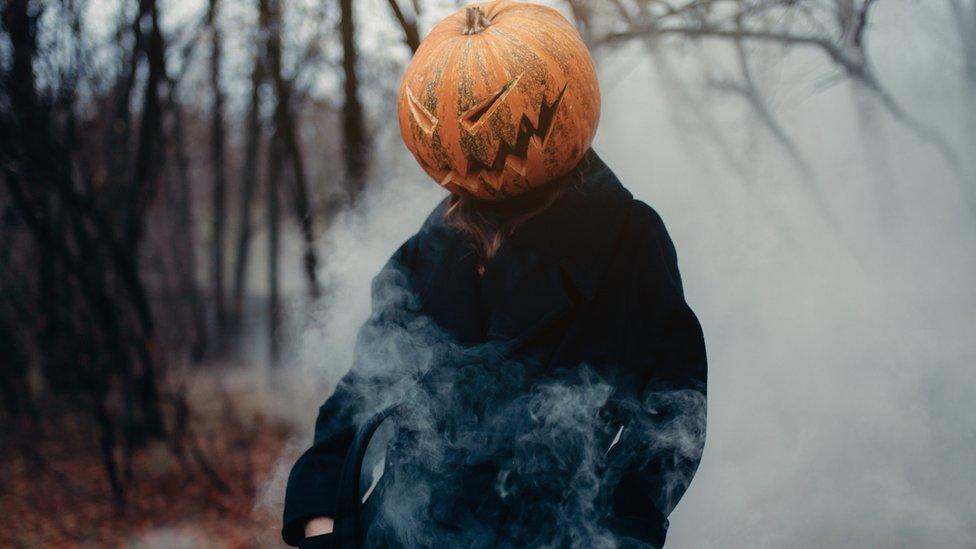
One tip is to go trick or treating during the day.
Going out when it's dark might trigger anxiety so the National Autistic Society suggests trick or treating during the day could be better.
Visual maps
Plan your trip together and create a visual map of the route and help prepare for the houses you'll visit and who might answer the door.
Use apps to help prepare them.
You can also pre-arrange visits to a limited number of houses - so they know what to expect.
What to wear
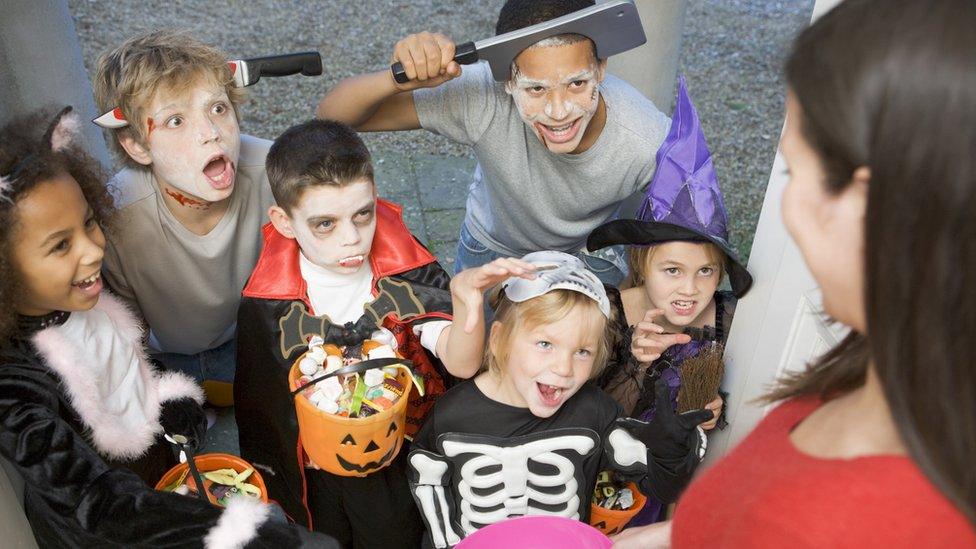
Dressing up can be fun for some but if the costume isn't comfortable it can make it harder.
The advice is to pick something the child is passionate about and it doesn't have to fit in with the "scary" theme.
It's good to get them involved in planning.
Answering the door
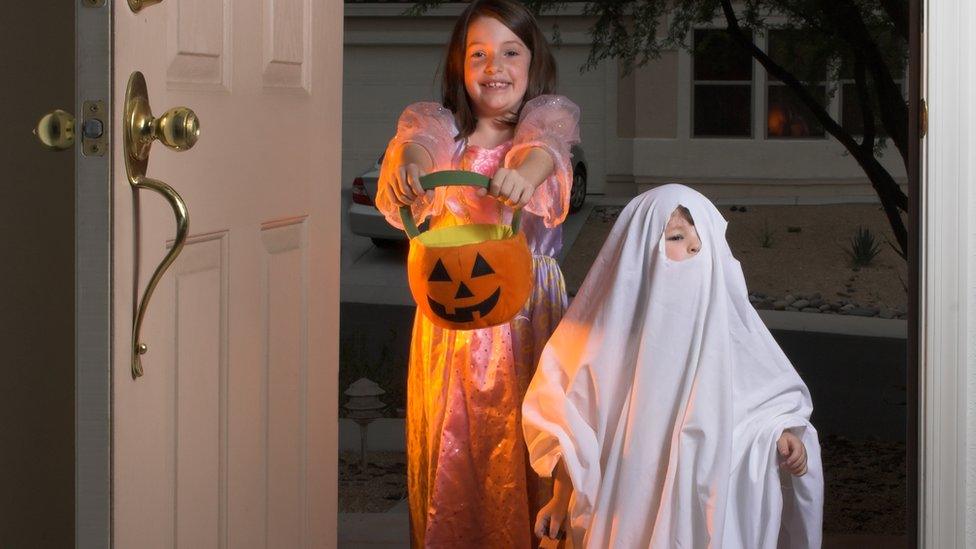
The charity says the public can play a big part in helping to make it easier for people with autism.
It says if a child is distressed it can be made even harder by judgemental tuts and stares from other people, who see someone acting differently.
Try and be patient and understanding; they may need more time to process information or to be asked what kind of treat they'd like.
Tom Purser from the charity says, "Autistic children and adults make up a large part of our community - around 1 in 100 people - and should be able to enjoy Halloween just like everyone else."


Follow Newsbeat on Instagram, external, Facebook, external, Twitter, external and YouTube, external.
Listen to Newsbeat live at 12:45 and 17:45 weekdays - or listen back here.
- Published31 October 2019
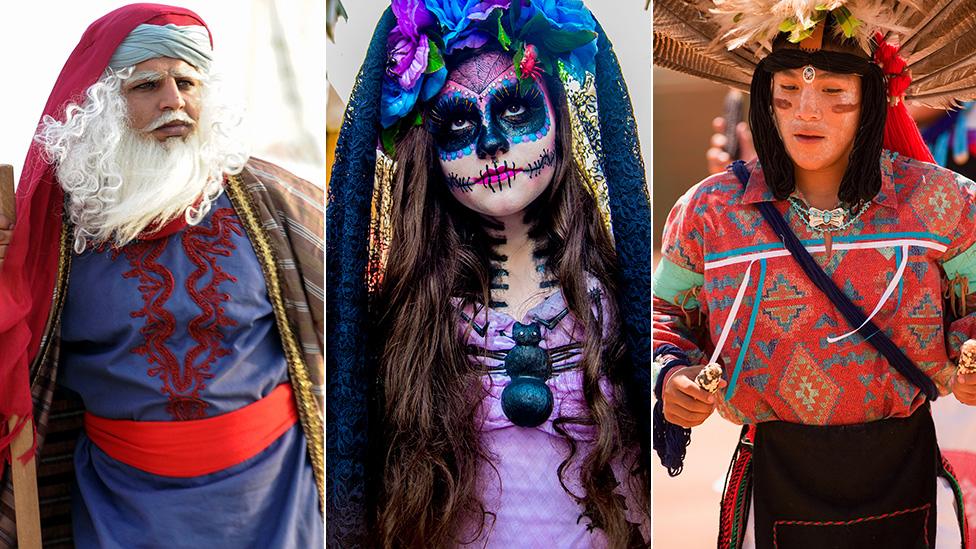
- Published30 October 2019
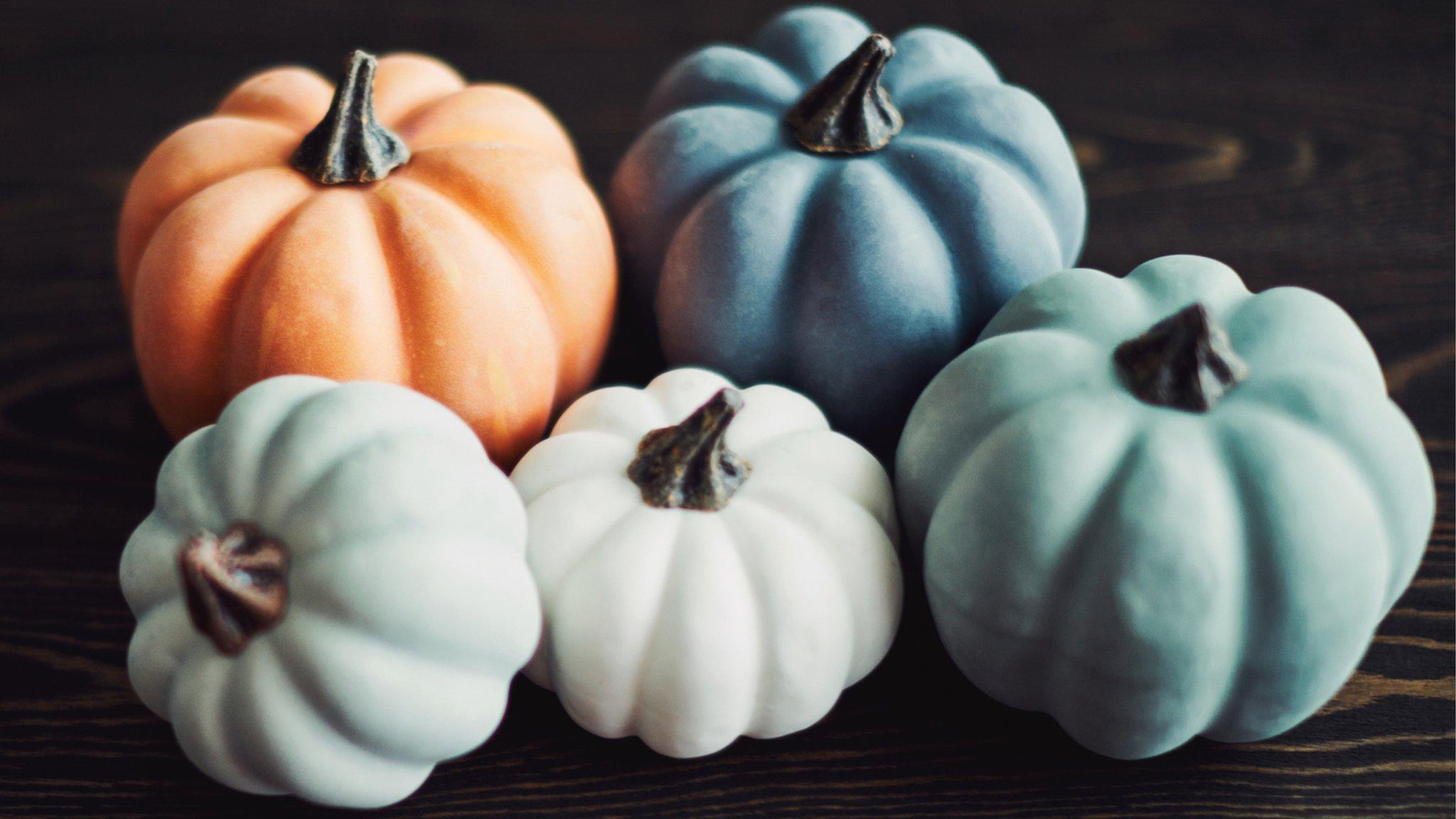
- Published30 October 2019
